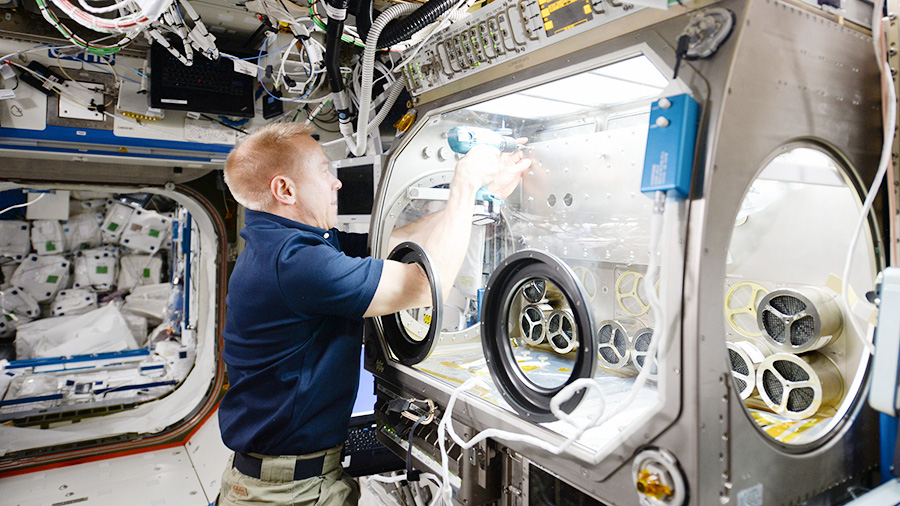 |
| Our spacefarers have a very special perspective on "Earth Day." (Image courtesy NASA.gov.) |
This week, both Earthlings and astro-adventurers celebrated Earth Day, in which we pay tribute to the spot where humanity has crashed for the last few eons. Of course, no one is better to showcase Earth in all its glory than those perched in low-earth orbit! Their 4K video of our home turf is soon to be released as the film "A Beautiful Planet"...but you can check out the teasers here!
"A Beautiful Planet" premieres on April 29th, and was shot in 4K resolution during six months last year aboard the ISS. All the beauty they captured isn't just for show...images from NASA have helped assess damages and predict patterns for weather disasters and other major occurrences the world over.
 |
| And the aurora helps out by looking cool. (Image courtesy NASA.gov.) |
In scientific news, this week the crew had a diverse set of tasks to complete, as usual. They studied how particles act at the nanolevel, which could help to promote better filtration or drug-delivery systems on Earth. Studying how the micro-gravity particles flow in the small scale assesses the unique ways in which the particles interact with channels and other elements around them while in space.
 |
| Astronaut Tim Kopra prepares to throw down on some science in the ISS Microgravity Science Glovebox. (Image courtesy NASA.gov.) |
The astronauts also began work on the student-designed Genes In Space experiment, which seeks to better understand how genetics are altered in microgravity, and why that might have an effect on the human immune system. Tracking these changes is the current focus of the experiment, which seeks to understand many aspects of DNA in space. This research will be valuable in assessing how humans can best survive on long-distance missions, and also how DNA could affect possible immune system issues for Earthlings.
 |
| Astronaut Jeff Williams wrangles tiny genetic particles in the ISS's WetLab-2. (Image courtesy NASA.gov.) |
Using the new WetLab-2 system, which was recently flown to the station, astronauts can isolate RNA from a biological sample inside 30 minutes, and use this data to better understand how certain genes in the organism will express themselves. Using the Quantitative Polymerase Chain Reaction process (qPCR) popular on Earth for similar experiments, the WetLab-2 removes the need for many experiments to be flown back home for further assessment. The comprehensive picture it paints could enable more real-time discoveries on the operations and adaptations of genetic material in space.
Astronaut Jeff Williams also found some time to study the bigger picture (as opposed to the microscopic one), turning his photographic eye back down dirtside. He captured several amazing images for National Parks Week and posted them to social media under the hashtag #FindYourPark.
 |
| Yosemite National Park. |
 |
| The Grand Canyon. |
 |
| Salt domes of the Great Salt Desert, Iran. |
Looking good, Earth! Here's to another few billion years.
That's it for this Sunday, space fans! Tune in next week to learn about a very special marathoner who competed...FROM SPACE.
| We want to make sure we have all the awesome details intact before reporting on astronaut Tim Peake's mighty maranthon mission... but it happened, tied to a treadmill! (Image courtesy mirror.co.uk.) |
See you next Sunday! Watch this space!
 |
| Someone should write a song about the Orbital Blues. What's Chris Hadfield been up to? (Image courtesy NASA.gov.) |

No comments:
Post a Comment